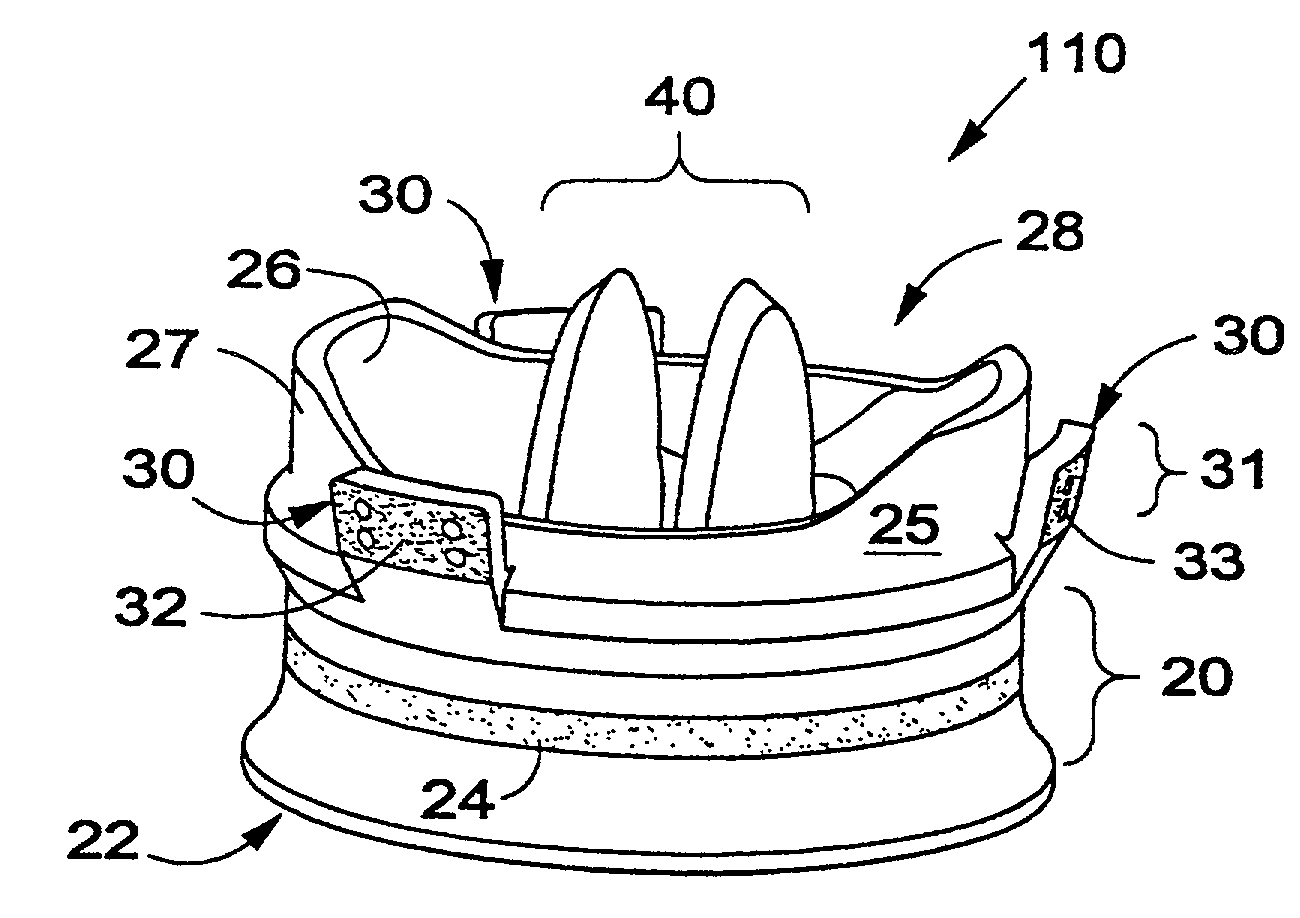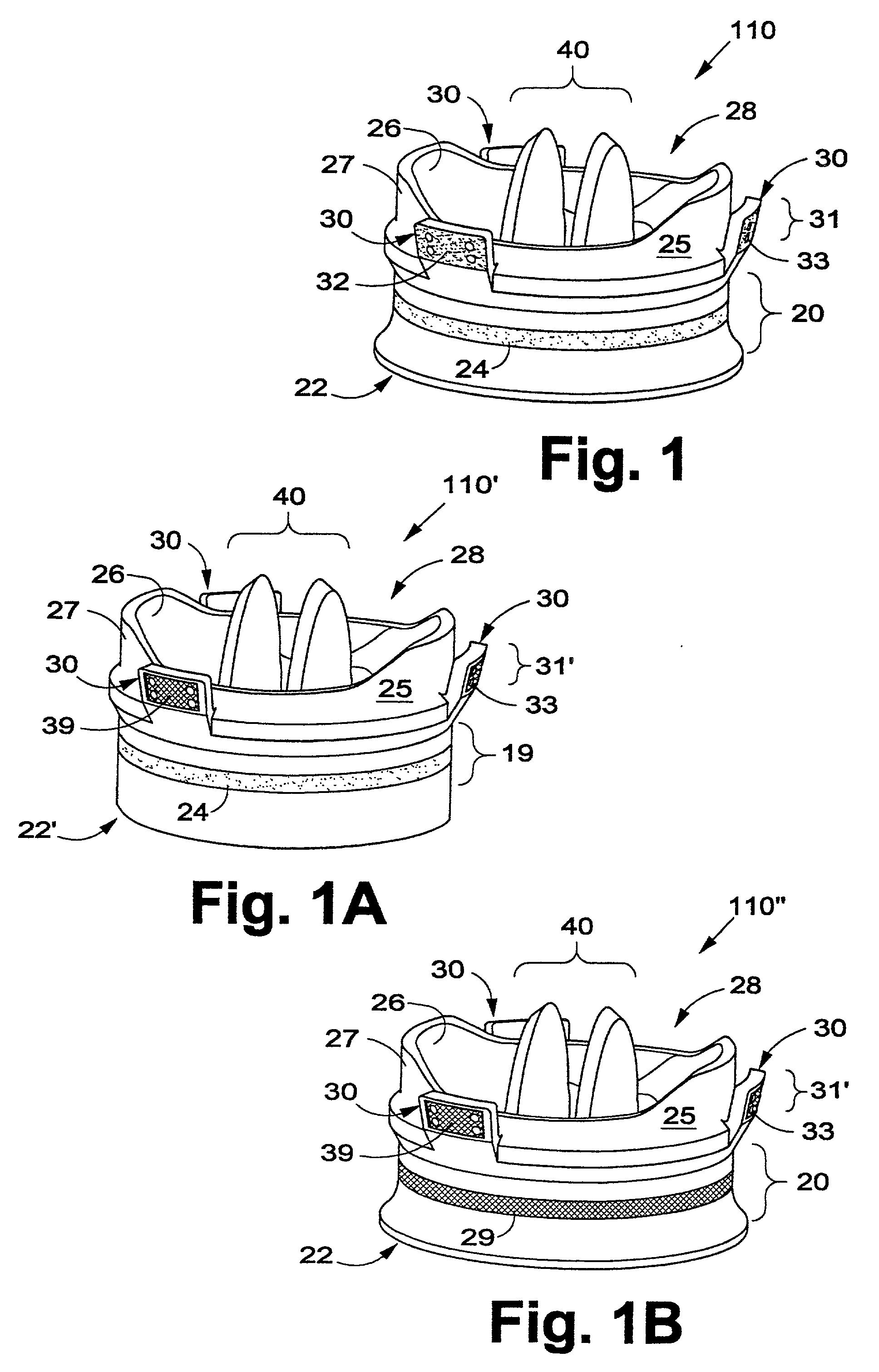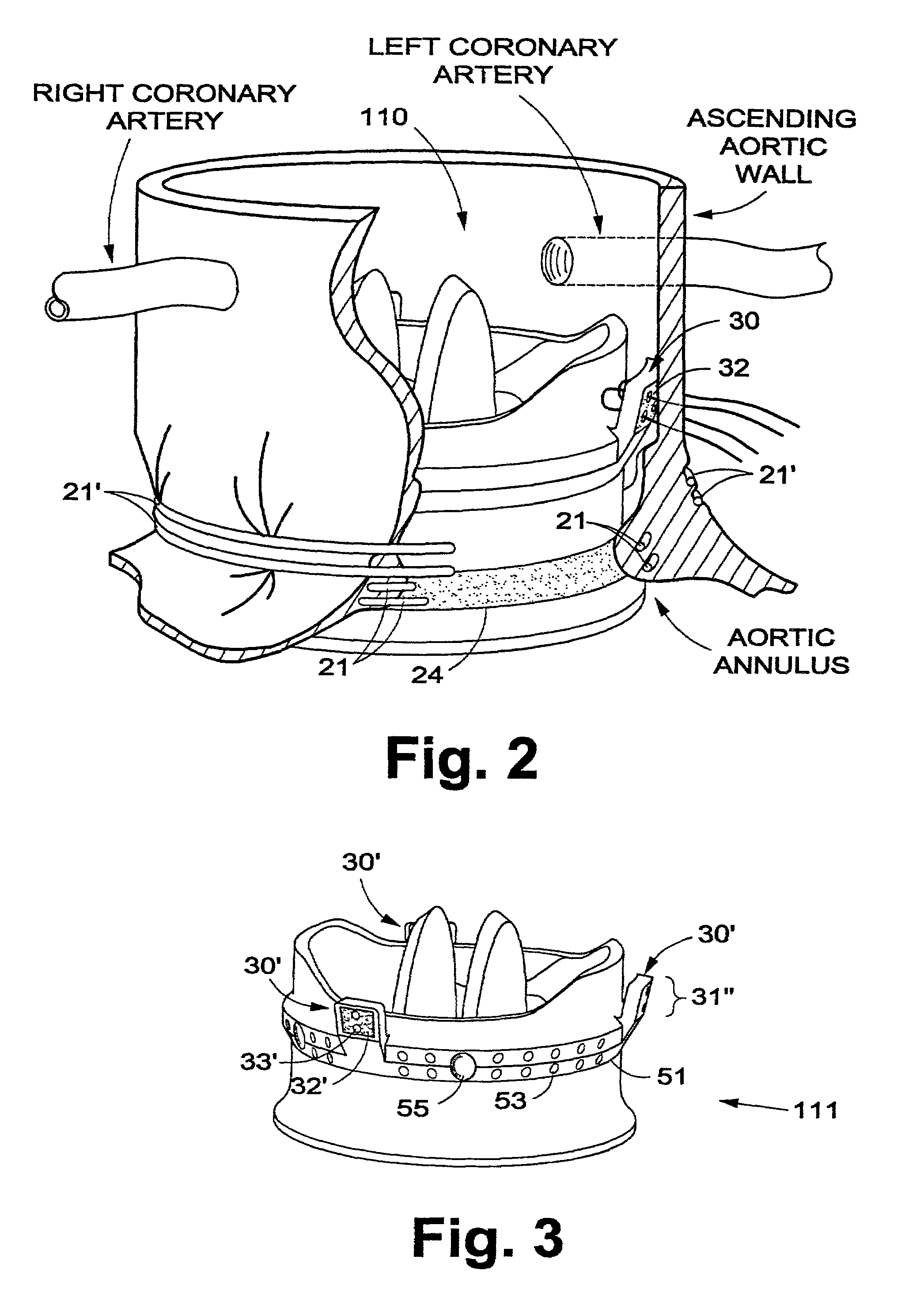Prosthetic aortic valve
a prosthetic and aortic valve technology, applied in the field of prosthetic aortic valves, can solve the problems of high risk of thromboembolism, high cost and inconvenience, and impair health, and achieve the effect of minimizing or eliminating the additional risk of infection and/or thromboembolism
- Summary
- Abstract
- Description
- Claims
- Application Information
AI Technical Summary
Benefits of technology
Problems solved by technology
Method used
Image
Examples
Embodiment Construction
[0048]A semirigid sewing flange of the present invention allows placement of a plurality of interrupted sutures for securing a prosthetic valve to the aortic valve commissures and / or to the ascending aortic wall between the commissures. Since the commissures themselves are generally not evenly spaced around the annulus, the interrupted sutures are generally not evenly spaced either. Thus, while suitable for the valve securing function, these interrupted sutures are not preferred for the function of sealing to prevent blood leakage around an implanted prosthetic valve.
[0049]The function of sealing to prevent blood leakage around implanted valves of the present invention is provided by tension in one or more circumferential tensioning cords. Each such tensioning cord is placed within the tissue surrounding a patient's aortic annular opening (as, for example, by one or more purse-string sutures placed within the tissue) and / or around the ascending aortic wall distal to the aortic annul...
PUM
 Login to View More
Login to View More Abstract
Description
Claims
Application Information
 Login to View More
Login to View More - R&D
- Intellectual Property
- Life Sciences
- Materials
- Tech Scout
- Unparalleled Data Quality
- Higher Quality Content
- 60% Fewer Hallucinations
Browse by: Latest US Patents, China's latest patents, Technical Efficacy Thesaurus, Application Domain, Technology Topic, Popular Technical Reports.
© 2025 PatSnap. All rights reserved.Legal|Privacy policy|Modern Slavery Act Transparency Statement|Sitemap|About US| Contact US: help@patsnap.com



